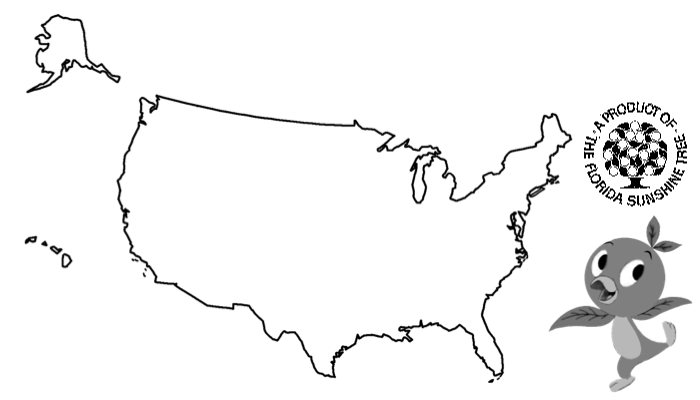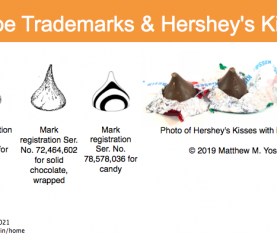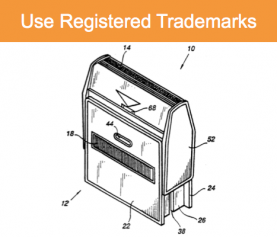“Use in commerce”, “intent to use”, and trademarks
To apply for a Federal trademark registration, you must either have used the mark in commerce, or intend to use the mark in commerce. How do you know what is a “use in commerce”, and what is an “intent to use”? Read on to discover why it matters.
Use in commerce
Location and scope of commerce
For Federal trademark registrations, “use in commerce” means a use that Congress could regulate: interstate commerce, commerce with other countries, or territorial commerce. “Territorial” means commerce in Washington D.C., or with Indian tribal reservations or nations, or in the five U.S. Territories, or between any of those and U.S. States. Commerce that is only local to a region in part or all of a single state (or commonwealth, they’re not all states…) can be protected with a trademark registration in that state, but not with a Federal trademark registration (uses local to Puerto Rico can be protected with a Federal trademark registration and a Puerto Rico trademark registration, and probably should be protected with both because business is conducted in Spanish in Puerto Rico). Note also that most states require use in commerce of a mark before they will permit registration; “intent to use” may not be sufficient.
Sales to customers who travel across state lines, or shipments or other transportation across state lines for commerce, count as interstate commerce. (Take a look at my blog post if you’re wondering what a trademark or a servicemark is, and what the difference between the terms is.)
Actual commerce
To count as a “use in commerce”, there must be actual sales or offers for sales, or transportation of goods across state lines (or territorial lines). The Trademark Act, 15 U.S.C. §§1051-1141n, defines “use in commerce” as “the bona fide use of a mark in the ordinary course of trade”. It is not enough to use the mark “merely to reserve a right in a mark.” While the phrase “bona fide use” has not been more precisely defined by the courts, Congress and the Trademark Law Revision Act of 1988 (see TMEP 901.02) made clear that “use in the ordinary course of trade” will be different in different industries.
Not actual commerce
There are many examples of uses that were held to be not good faith uses in commerce, but rather were attempts to reserve the right to use a mark, which is not allowed except by filing an “intent to use” trademark registration application. One such example was in State of Florida v. Real Juices, Inc., in which the company wanted to assert rights to a mark in the phrase “SUNSHINE TREE” and the State of Florida disputed those rights, claiming they infringed on its (unregistered) marks in the phrase “Produce of the Florida Sunshine Tree” and the “Sunshine Tree Song” (you can see a video of the commercial with the song on YouTube). An executive of Highland Food Products, which assigned its purported trademark rights to Real Juices, attempted to create a use in commerce of the mark “SUNSHINE TREE”, by typing those words on six self-adhesive labels, placing the labels on six unlabeled grapefruit juice cans, and mailing the cans to another state with no evidence of any payment. This was held to not be a “use in commerce.” The State of Florida prevailed, and stopped Real Juices from using the phrase. (Later, the State of Florida registered related marks, and still defends them: see their administrative rules and a trademark registration; their trademarked images are used with this post for illustration.)
The key point: if you’re not using the mark in actual commerce, you’re not entitled to claim that you are. Don’t engage in sham transactions to attempt to show a use in commerce. What should you do instead? Consider whether you can file a Federal trademark registration application on an “intent to use” basis.
Intent to use
If you have a good-faith intent to use a mark in commerce (for which a Federal trademark registration is available, see above), you can file a Federal trademark registration application on an “intent to use” basis. At the time you file the trademark registration application, you must have the good faith intent (or bona fide intent in lawyerese) to use the mark in commerce, and not merely be attempting to reserve the name. You must intend to use the trademark within a three-year period from when you file the trademark registration application – read on for info on how to use and file follow-on forms after the application is approved, in order to take advantage of the three-year period.
How does one file an “intent to use” application?
The application is identical to one for a mark that you are already using in commerce, except that you must indicate that you intend to use it in commerce, and are not already doing so. And, if and when the USPTO says that your mark can be registered (by sending a Notice of Allowance), you have up to 36 months to begin using the mark in commerce. When you do, you must notify the USPTO by filing a Statement of Use or a Request for Extension of Time. You must file a Statement of Use, or a Request for Extension of Time, within six months of a Notice of Allowance, and every six months, up to a maximum of five Requests for Extension of Time, followed by the Statement of use within six months, totaling 36 months – the three-year period in which you must begin using the mark in commerce in order to have the USPTO issue the registration of the mark.
Why does the distinction matter?
If you file a “use in commerce” application and you’re not using the mark in a way that entitles you to Federal registration, you could lose your rights to the registration, resulting in wasted time and money. If you file an “intent to use” application incorrectly, you could also lose your ability to protect your mark with a Federal registration. Before proceeding with any filing, you should consult with a trademark and branding attorney. And you want to be able to take advantage of the benefits of trademark registrations.
Do you have questions? Agree or disagree? I’d be glad to hear from you in the comments. Call me at 617-340-9295 or email me at my Contact Me page. Or, find me on Facebook, Twitter, Google+, LinkedIn, Google Local, or Avvo.







[…] business, now and in the next three to four years (to see why that time horizon applies, check out my post on “use in commerce” and “intent to use” in trademark registration […]